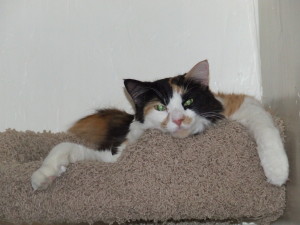 This is the final part of a three part series, written by Laurie Goldstein. In Part 1, we discussed how long term use of antacids may raise stomach pH, which in turn can cause a number of health problems. In Part 2, we talked about how to identify nausea in your cat (including subtle symptoms), hairballs, and how food is a primary source of tummy (and other gastrointestinal) troubles in our cats.
This is the final part of a three part series, written by Laurie Goldstein. In Part 1, we discussed how long term use of antacids may raise stomach pH, which in turn can cause a number of health problems. In Part 2, we talked about how to identify nausea in your cat (including subtle symptoms), hairballs, and how food is a primary source of tummy (and other gastrointestinal) troubles in our cats.
As the primary cause of nausea and vomiting in our cats is food related, often managing nausea and/or vomiting in your cat is as simple as finding a non-kibble, meat-based, grain-free, low carbohydrate food that agrees with your kitty. Sometimes this doesn’t seem so simple as your vet or other cat parents offer suggestion after suggestion and your “picky” kitty turns up her nose at food after food. But the short-term use of a bland diet makes food-related identification simple and straightforward. This frequently resolves the problem if there isn’t an underlying disease.
……. Click to read the entire article. ……

